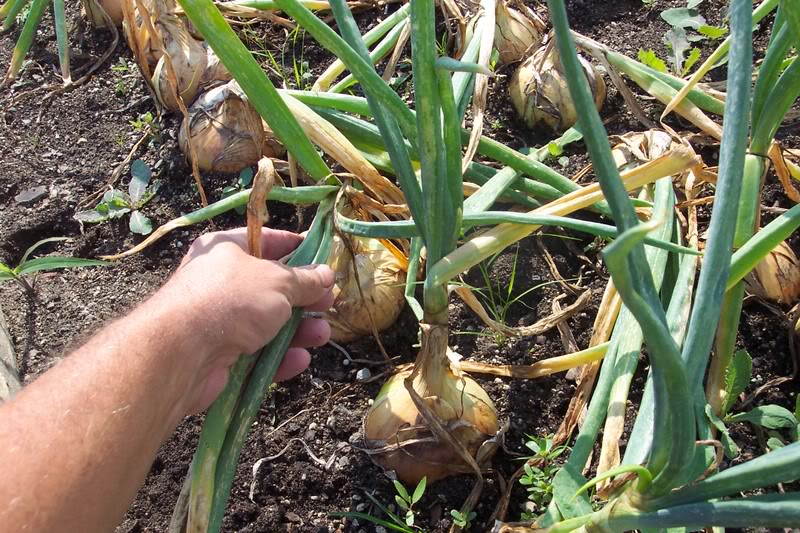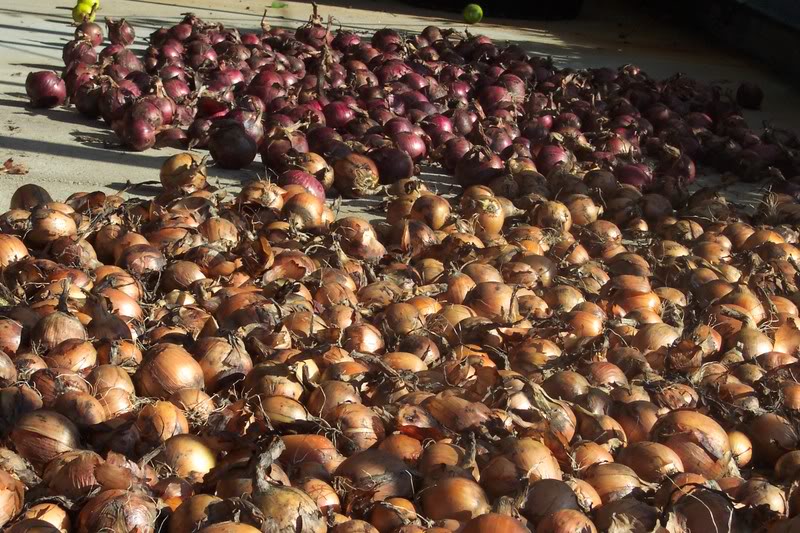Here we are, it’s the middle of July. The tomatoes have made good growth so far but some of them don’t have cages around them. Right now the plants are so big, you couldn’t get a cage around it no matter how hard you tried. What’s a gardener to do?
The first idea that comes to mind is to stake the plants to get them off of the ground. That sounds good, but at this point in time it is not the best thing to do for tomatoes.
Staking and pruning works great for small areas or when a gardener wants to cram as many plants as possible into a given area. In other words it makes efficient use of garden space.
In order for tomatoes to be staked properly however, they must be pruned from an early age. Pruning must continue regularly until the plant is fully grown or when the plant reaches the size you want. All of that pruning actually reduces the tomato yield per plant but it can increase the yield over a certain area because you can fit more plants per square yard.
If you haven’t caged your tomatoes by now, I’m willing to bet you haven’t been pruning them either, so for that reason alone, staking is out of the picture. Not only that, driving stakes next to a plant this time of year can cause serious damage to the roots.
In this case the easiest solution is also the best solution.
Tomato plants by nature have a sprawling growth habit, they don’t climb like cucumbers or melons. They don’t prop themselves up against objects to grow upward either, which is why we have to train them and tie them to supports.
You can simply let tomato plants do their thing and sprawl over the ground — if you mulch them. One of the best mulches to use for this is straw.
Mulch the plants by gently lifting the plant and tucking the straw beneath the foliage. Use about six to eight inches of straw and make sure you cover the entire space under the plant.The deep mulch will raise the foliage and fruit away from the ground and drastically reduce the possibility of disease and rotting fruit compared to letting it grow directly on the garden soil.
Tomato plants can take up a lot of “floor space” when left to grow over the ground. That means they may get crowded if they were planted close together with the idea of staking in mind.
There are some advantages to using this method. One is an increase in yield per plant. Another is less work because no pruning or tying is required. Plus there is a reduction in cracked tomatoes and blossom end rot because of more even soil moisture in the root zone.
On the negative side, the fruit is more apt to have an uneven color on the side resting on the straw. The fruit may somewhat smaller and not quite as even in shape compared to staked tomatoes.
Bob





